Ottavio De Cobelli
Towards Safer Robot-Assisted Surgery: A Markerless Augmented Reality Framework
Sep 14, 2023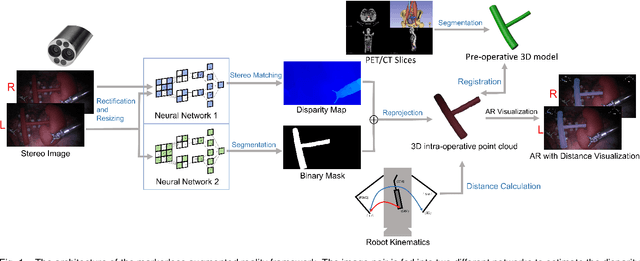
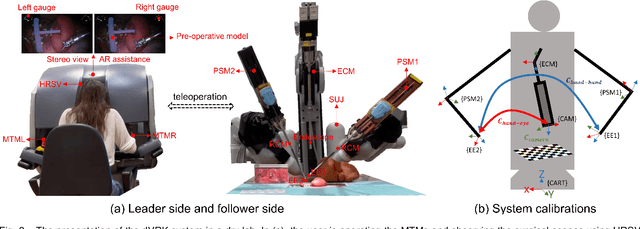


Abstract:Robot-assisted surgery is rapidly developing in the medical field, and the integration of augmented reality shows the potential of improving the surgeons' operation performance by providing more visual information. In this paper, we proposed a markerless augmented reality framework to enhance safety by avoiding intra-operative bleeding which is a high risk caused by the collision between the surgical instruments and the blood vessel. Advanced stereo reconstruction and segmentation networks are compared to find out the best combination to reconstruct the intra-operative blood vessel in the 3D space for the registration of the pre-operative model, and the minimum distance detection between the instruments and the blood vessel is implemented. A robot-assisted lymphadenectomy is simulated on the da Vinci Research Kit in a dry lab, and ten human subjects performed this operation to explore the usability of the proposed framework. The result shows that the augmented reality framework can help the users to avoid the dangerous collision between the instruments and the blood vessel while not introducing an extra load. It provides a flexible framework that integrates augmented reality into the medical robot platform to enhance safety during the operation.
A transfer-learning approach for lesion detection in endoscopic images from the urinary tract
Apr 08, 2021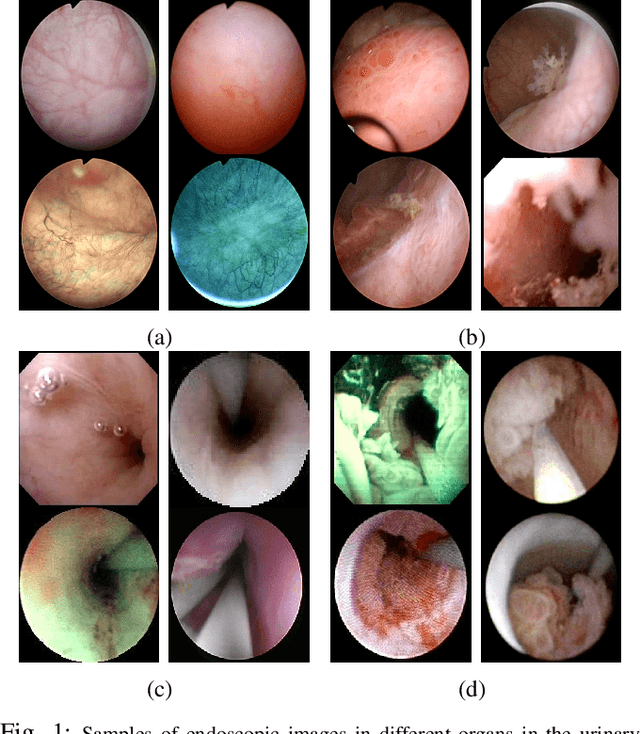
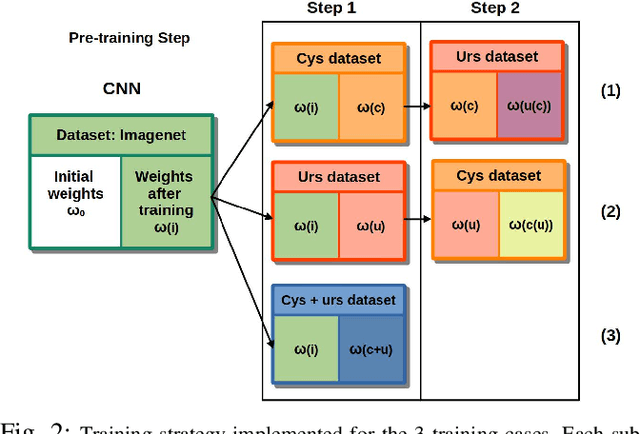

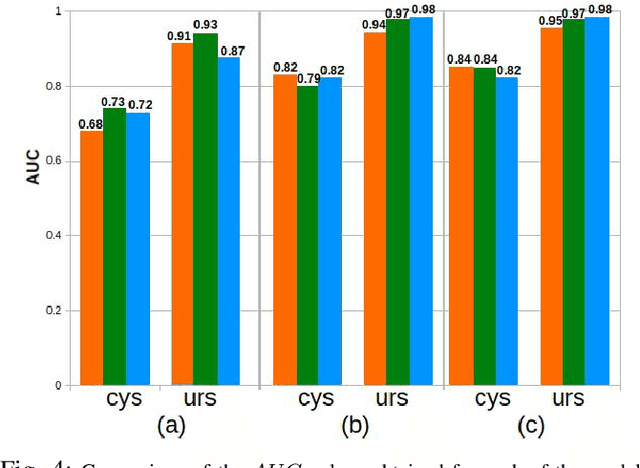
Abstract:Ureteroscopy and cystoscopy are the gold standard methods to identify and treat tumors along the urinary tract. It has been reported that during a normal procedure a rate of 10-20 % of the lesions could be missed. In this work we study the implementation of 3 different Convolutional Neural Networks (CNNs), using a 2-steps training strategy, to classify images from the urinary tract with and without lesions. A total of 6,101 images from ureteroscopy and cystoscopy procedures were collected. The CNNs were trained and tested using transfer learning in a two-steps fashion on 3 datasets. The datasets used were: 1) only ureteroscopy images, 2) only cystoscopy images and 3) the combination of both of them. For cystoscopy data, VGG performed better obtaining an Area Under the ROC Curve (AUC) value of 0.846. In the cases of ureteroscopy and the combination of both datasets, ResNet50 achieved the best results with AUC values of 0.987 and 0.940. The use of a training dataset that comprehends both domains results in general better performances, but performing a second stage of transfer learning achieves comparable ones. There is no single model which performs better in all scenarios, but ResNet50 is the network that achieves the best performances in most of them. The obtained results open the opportunity for further investigation with a view for improving lesion detection in endoscopic images of the urinary system.
 Add to Chrome
Add to Chrome Add to Firefox
Add to Firefox Add to Edge
Add to Edge